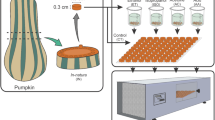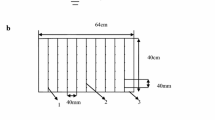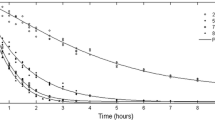Conclusions
It was established in principle that high-chamotte products can be dried by electroosmosis, and the power consumption involved was calculated.
The electrical resistance of high-chamotte compounds varies exponentially with the moisture content.
The rate of drying depends on the current and the area of the anode and does not depend on the area of the cathode.
Similar content being viewed by others
Literature cited
L. I. Kurdenkov, Soil Reinforcement [in Russian], Vol. 31, Gosstroiizdat, Moscow (1957), pp. 12–31.
B. P. Gorbunov and L. I. Kurdenkov, Soil Reinforcement [in Russian], Vol. 50, Gosstroiizdat, Moscow (1968), pp. 20–27.
I. E. Tamm, Fundamentals of the Theory of Electricity [in Russian], Nauka, Moscow (1966).
Author information
Authors and Affiliations
Additional information
Translated from Ogneupory, No. 6, pp. 15–18, June, 1974.
Rights and permissions
About this article
Cite this article
Ol'khovskii, I.A., Nekrasov, V.V. Electroosmotic dehydration of high-chamotte compounds. Refractories 15, 349–352 (1974). https://doi.org/10.1007/BF01284166
Issue Date:
DOI: https://doi.org/10.1007/BF01284166




